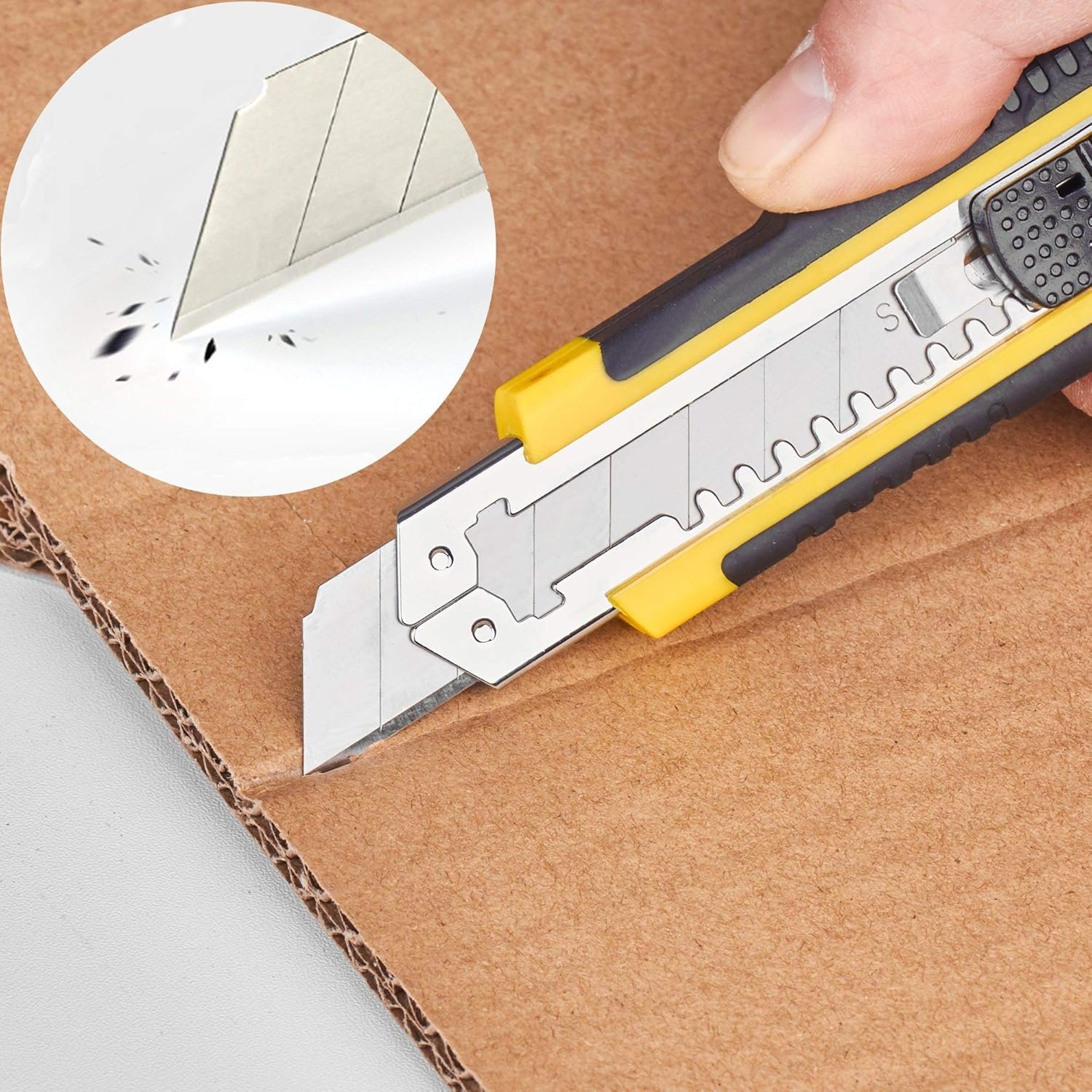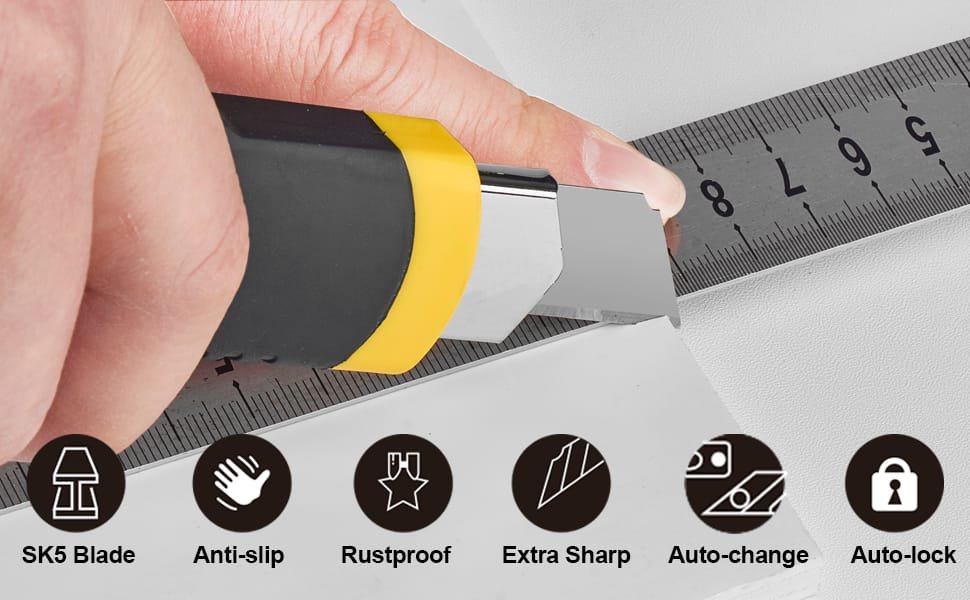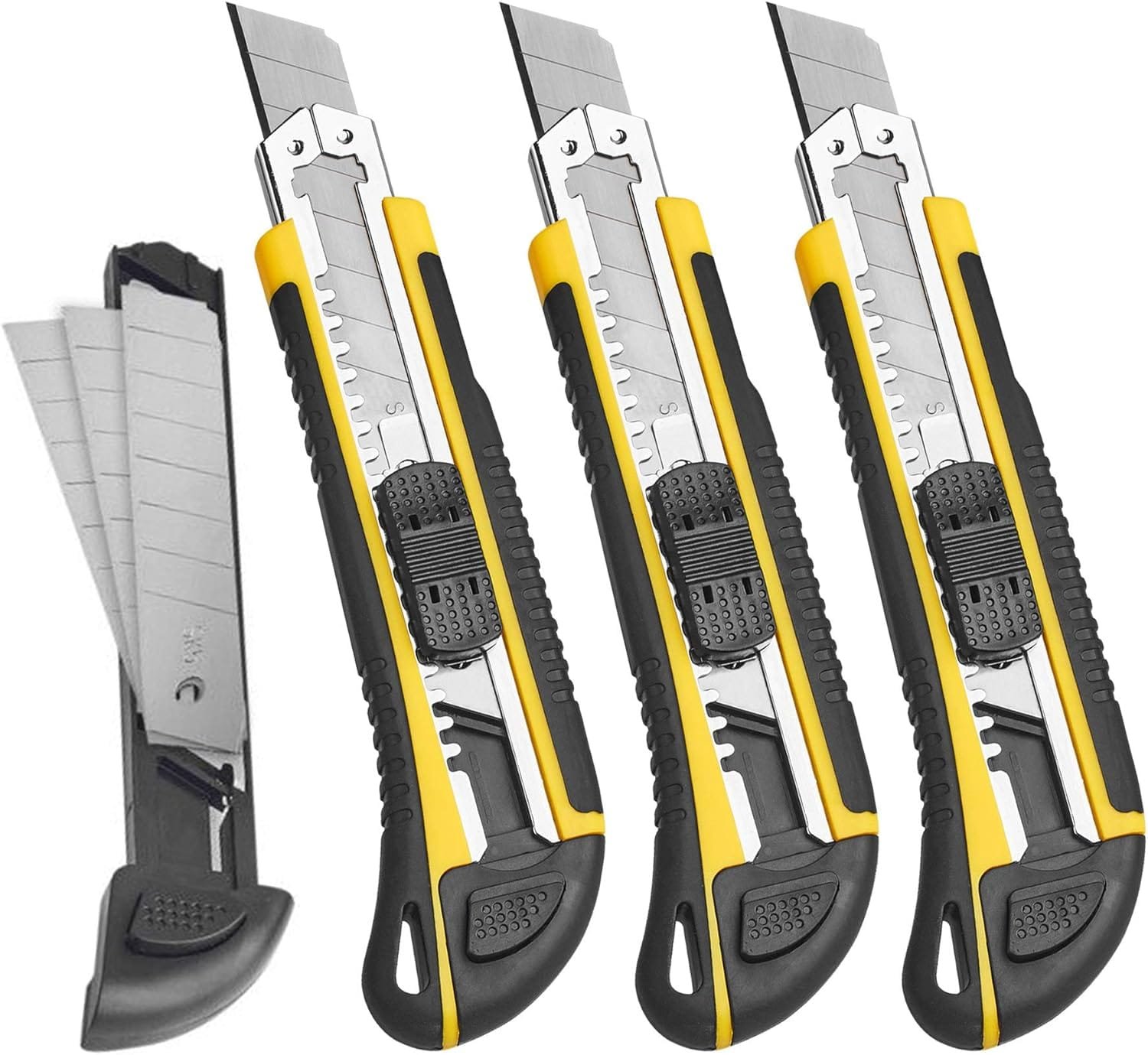Utility knives are essential tools in both industrial and domestic settings, known for their versatility and efficiency. However, improper use can lead to serious injuries. This article explores the necessary precautions and best practices when using a utility knife, ensuring safety and effectiveness in your cutting tasks.

Understanding the Utility Knife
Utility knives are designed for various cutting tasks, from opening packages to cutting through tougher materials. They come in several types, including retractable blade knives, snap-off knives, and fixed-blade knives. Each type has its own set of features that cater to specific needs.

The Importance of Safety
When using a utility knife, safety should always be the top priority. Here are some critical safety measures to consider:
- Use Sharp Blades: A sharp blade is safer than a dull one. Dull blades require more force to cut, increasing the risk of slipping and causing injuries. Always ensure your utility knife is equipped with a sharp blade before use.
- Wear Protective Gear: Personal protective equipment (PPE) such as cut-resistant gloves and safety goggles can significantly reduce the risk of injury.
- Inspect Before Use: Always inspect your utility knife for any damage or wear before starting your cutting tasks. Ensure that blades are securely attached and free from nicks or chips.
- Clear Your Workspace: A clutter-free workspace minimizes the risk of accidents. Remove any obstructions that could interfere with your cutting line.
Proper Cutting Techniques
Using a utility knife correctly involves adopting safe cutting techniques:
- Cut Away from Your Body: Always draw the knife away from your body rather than towards it. This reduces the risk of accidental cuts.
- Maintain Control: Keep a firm grip on the knife and ensure that your other hand is out of the cutting path. If necessary, secure your workpiece with clamps to prevent movement.
- Use Appropriate Force: Do not apply excessive pressure while cutting; let the blade do the work. If you encounter resistance, check for obstructions rather than forcing the cut.
- Make Multiple Passes: For thicker materials, make several passes with lighter pressure instead of trying to cut through in one go.

SK5 utility blades
Storing Your Utility Knife Safely
When not in use, proper storage of your utility knife is crucial:
- Retract or Remove Blades: Always retract the blade fully into the handle or remove it entirely when storing the knife. This prevents accidental cuts during handling or storage.
- Use Protective Sheaths: If available, use protective sheaths or covers for blades to prevent accidental injuries.
Common Mistakes to Avoid
To ensure safe usage of utility knives, avoid these common mistakes:
- Using Dull Blades: As mentioned earlier, dull blades increase the likelihood of accidents due to loss of control.
- Improper Use: Never use a utility knife for purposes other than intended (e.g., as a screwdriver or pry bar). This can lead to blade breakage and injuries.
- Neglecting Maintenance: Regularly check and replace blades as needed. A well-maintained utility knife performs better and is safer to use.
Additional Safety Tips
In addition to the aforementioned precautions, here are some more tips for safe utility knife usage:
- Choose the Right Knife: Selecting a utility knife that suits your specific cutting needs is essential. For example, some tasks may require a heavier-duty knife while others can be accomplished with lighter models.
- Use Cutting Mats: When cutting on hard surfaces, using a cutting mat can help protect both your work surface and the blade from damage.
- Control Your Cutting Motion: Avoid swinging or jerking the knife during cuts; instead, pull it through smoothly with light pressure for cleaner results.
- Dispose of Blades Properly: Always dispose of dull or broken blades in puncture-resistant containers to prevent accidental cuts during disposal.
Conclusion
In conclusion, using a utility knife effectively requires understanding its features and adhering to safety practices. By following these guidelines—keeping blades sharp, wearing protective gear, maintaining control during cuts, and storing knives correctly—you can minimize risks associated with this essential tool.
Frequently Asked Questions
1. What type of protective gear should I wear when using a utility knife?
- It is advisable to wear cut-resistant gloves and safety goggles to protect against cuts and flying debris.
2. How often should I replace the blade on my utility knife?
- Replace the blade whenever it becomes dull or damaged; regular checks before use are recommended.
3. Can I use a utility knife on any material?
- Utility knives are versatile but should not be used on materials that exceed their cutting capacity; always refer to manufacturer guidelines.
4. What should I do if my utility knife slips while cutting?
- If your knife slips, stop immediately; assess your grip and ensure that your workspace is clear before continuing.
5. Is it safe to store my utility knife with the blade extended?
- No, always retract or remove the blade when not in use to prevent accidental cuts.

Expanding on Utility Knife Usage
As we delve deeper into utility knife usage, it’s important to understand various applications across different industries and how they can enhance productivity while ensuring safety.
Types of Utility Knives
Understanding different types of utility knives can help you choose the right one for specific tasks:
- Retractable Blade Knives: These knives feature blades that retract into the handle when not in use. They offer enhanced safety by minimizing exposure to sharp edges when stored.
- Snap-Off Knives: With segments that can be snapped off as they become dull, these knives provide a continuous supply of sharp edges without needing full blade replacements.
- Fixed-Blade Knives: Known for their durability, fixed-blade knives are ideal for heavy-duty tasks but require careful handling due to their exposed blades.

Best Practices for Maintenance
Proper maintenance extends the life of your utility knife and ensures optimal performance:
1. Regular Cleaning: After each use, clean your utility knife with mild detergent and warm water. Avoid abrasive materials that could scratch or damage components.
2. Lubrication: Apply lubricant periodically to moving parts like blade sliders or hinges to maintain smooth operation.
3. Blade Replacement: Follow manufacturer guidelines for replacing blades—ensure they are seated properly before use to avoid accidents.
4. Storage Solutions: Consider investing in storage solutions like tool organizers or cases designed specifically for utility knives to keep them secure and accessible while preventing damage.
Practical Applications
Utility knives serve various purposes across multiple industries:
- Construction: In construction settings, utility knives are invaluable for cutting drywall, insulation materials, or packaging materials efficiently and safely.
- Retail Packaging: Retail workers often rely on utility knives for opening boxes quickly while ensuring minimal risk of injury through proper techniques.
- Arts and Crafts: Crafters utilize precision cutting with utility knives for intricate designs in paper crafts or model building.
- Food Preparation: In culinary settings, certain types of utility knives are used for slicing through packaging or even food items safely when traditional kitchen tools aren’t available.
Conclusion
In summary, understanding how to properly utilize a utility knife can significantly enhance both safety and efficiency in various tasks across different industries. By adhering to safety practices such as using sharp blades, wearing protective gear, maintaining control during cuts, and storing tools correctly, users can minimize risks associated with this essential tool while maximizing productivity.
Citations:
[1] https://viptec.com.tr/en/blog/improper-use-of-utility-knife-and-how-to-use-it-properly
[2] https://www.bauer-massstabfabrik.de/en/professional-utility-knife-guide/
[3] https://www.c2safety.co.uk/utility-knife-safety/
[4] https://safetycutters.net/how-to-properly-clean-maintain-and-store-your-utility-knives-and-box-cutters/
[5] https://www.youtube.com/watch?v=NlnOsnr94qM

